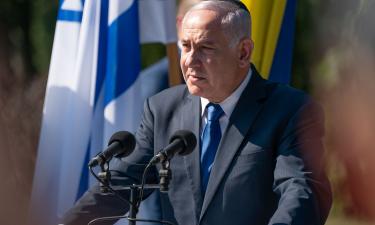Tarek Mahmood: Uzbekistan's 'Bridge of Friendship' Stands Closed to the South
TERMIZ -- Every day Abdullah Jahangirov Izzatullaevich sees anywhere between 80 and 1,000 pilgrims come his way into the ancient mosque of el-Hakim at-Termizi (cq), where he is the caretaker.
They all come from the north, praying in the 2,500-year-old structure in the belief that one visit, one prayer here, is worth at least 71 times the prayers offered almost anywhere else.
The pilgrims also come to bask and reflect in the mosque's aura and history, carrying the hope that any illnesses plaguing them will disperse. They can stroll through a garden of roses and a bounty of apricots, cherries, apples, dates, peaches and arbors of grapes, listen to the choruses of myna birds and contemplate the philosophy of the mosque's founder.
But no pilgrims come from the south. Just behind the mosque and the garden the tranquil nature is harshly shattered, There is an electric fence, followed by deep cuts in the ground and then a flat, hard dirt surface perforated by small lumps where land mines are buried. This is the no-man's zone along Uzbekistan's southern boundary, a 100 to 300-meter strip leading to the Amu Darya River and, beyond its swift current, the few lights coming from Afghanistan.
"They say some terrorists and some other forces are fighting and I don't understand who is killing whom," Izzatullaevich, 45, said. "I come here early morning and leave late night. I'm not concerned with what is going on, My country will provide my security. I'm just doing my job. The president will secure my safety."
An uneasy peace exists in Termiz, the one place in Uzbekistan where concerns of a wider conflict are most genuine. Some residents insist they can feel the ground move when U.S. bombs strike Mazar-e Sharif, 65 miles south of here in Afghanistan, in the war against terrorism, Osama bin Laden and the ruling Taliban regime. Others said they can hear the swoosh and then explosion of the bombs. Still others tell of riding the town's Ferris wheel to the very top and seeing the black smoke rising in the aftermath of the strikes.
"If we assist American troops, we could have problems with our neighbors and they could not forgive us," said Natasha Vusik, 45, who cares for the birds at the Termiz zoo. "I hope that it will not harm us."
Termiz was the major staging area for the Soviet Union's 1979-1989 war in Afghanistan. The electric fence which runs behind the mosque spans the entire 85 mile (137 kilometers) border between Uzbekistan and Afghanistan. Until the war ended, and even after Uzbekistan became independent, Termiz and its environs were a closed military zone, off limits to visitors.
Now its citizens are waiting, acknowledging a war in a nearby land but to date still so far away. They and their civic leaders try to carry on life as normal, but the wind and dust storms which flare up here like clockwork, uncontrollable outside forces have intruded.
On Thursday, standing in the zoo, looking across the river into Afghanistan makes clear the closeness of the conflict. Anti-Taliban forces were shelling positions in northern Afghanistan, softening them up for an upcoming assault, and the puffs of smoke could be seen.
And there is no mistaking the sound through the night of airplanes rumbling overhead, their roar competing with barking dogs and the late-night jubilant wedding partier.
Two planes with no markings were spotted on the runway at a military base in nearby Karshi on Saturday; another was visible on Sunday. But police and the military threw up new roadblocks and deployed personnel along back roads to prevent reporters from getting a close look.
The first U.S. troops deployed in the new war against terrorism -- and the first ever deployed on territory of the former Soviet Union -- were to settle into their new home at a Uzbek military base over the weekend.
The timing of their first actions over hostile territory miles south in Afghanistan remains unknown, but for now they are on very, very friendly territory. Among those who have heard about the soldiers, most think they are here to defend Uzbekistan from terrorists.
That idea had resonance after reports reached here Sunday that the Taliban had moved troops to its northern border with Uzbekistan; last week the Taliban warned it would strike Uzbekistan if the nation permitted U.S. troops to operate from its bases.
"U.S. personnel are already here, I can confirm that," Uzbekistan president Islam Karimov told reporters. "With the inhuman face of terrorism, we cannot afford to stand aside."
Termiz was to celebrate its 2,500 (CQ) birthday in late October but the ceremony has been postponed because of cotton production and the Afghan fighting. The government has ordered that construction of new buildings be completed before then, but a drop in economic activity in the region means the meager structures standing forlornly in open fields are unlikely to meet that edict.
"America is doing right, this action now," said Karem Kholnaza, 49, a veteran of the Soviet army's ill-fated war in Afghanistan. "It has to be paid back. The sinner has to be punished."
There is one road into Afghanistan, across the Bridge of Friendship. Heading toward the bridge, the wind and dust picks up, the clusters of homes get smaller and the waves of cotton plants -- "white gold," as the crop is called in the tourist brochures here -- gives way to rows of corn. Abruptly there is flatness and mud and barrenness and then a lone guard tower appears at the crossroads hamlet of Okhunbabaev.
Then comes Highway M-39: north to Tashkent, east to the Tajikistan border and south across the Bridge of Friendship into Afghanistan.
Turn toward Afghanistan and there is a faded white billboard with dusty red letters imploring motorists that "To Love The Motherland is the Duty of Every Citizen." But there is no one on the road, except a young boy softly using his stick on the hides of five cattle. Neither he nor his herd pay heed to the billboard or the lone police car idling in its shadow, parked there to make sure the inquisitive do not proceed along the road south.
The bridge was build by the military, with the engineers and laborers brought in from Moscow. It was constructed to permit cars and rail traffic, and over it Soviet troops and materials poured across it during the Afghan war. The casualties and the equipment carcasses came the other way and the bridge was closed in 1997.
Now soldiers stand ready should the Taliban attempt to cross the river and the bridge to disrupt Termiz. "The Taliban could not approach the border," said Rashid Kulmatov, the vice rector of Termiz University. "There are no mountains for them to hide in."
Adds Izzatullaevich, the caretaker at the mosque: "Our soldiers will not open the gates and say welcome. They are doing their duty 100 percent."
Uzbekistan president Islam Karimov said he will consider the request of humanitarian groups to reopen the bridge to permit aid to go into Afghanistan. But the betting in Termiz is the bridge would only reopen to let the next round of troops flow into the Afghan mountains.
A favorite rumor is that the anti-Taliban Northern Alliance will be successful in taking Maraz-e Shaif, the most important city and most important runway in northern Afghanistan. It is where the famed General Abdurrashid Dostum, who once helped the Soviets, then switched sides to help defeat them, made a stand in a mud fortress against the Taliban.
Dostum is reportedly closing in on Maraz-e Sharif again and after he regains control, so goes the rumor, the bridge will reopen and the road will be cleared for the 65-mile spurt from here to Mazar-e Sharif -- with rumbling U.S. supply trucks leading the way.
En route troops might pass strong testimonies to the aftermath of the last Afghan war. Many here recommend heeding these before a new force decides to cross the Friendship Bridge. In a vast field about two miles away from the mosque is a cemetery, not of bodies but of the crumbled remains of tanks and artillery, rendered broken and defeated during the failed Soviet war in Afghanistan. More than 100 tanks, their turrets and barrels poking out of mounds of windswept dirt, offer a chilling monument to a political and military disaster by one super power in Afghanistan.
The tank cemetery is near a series of nearby earthen circles, seven originally that were designed to defend old Termiz. But those warriors, a superpower which ruled the area around old Termiz for almost four centuries, found they could not match a fast moving, hit-and-run guerrilla force led by Genghis Khan. They too were defeated, providing both an ancient and modern reminder that the winds of victory here can shift very suddenly.
Subscribe to Pravda.Ru Telegram channel, Facebook, RSS!





